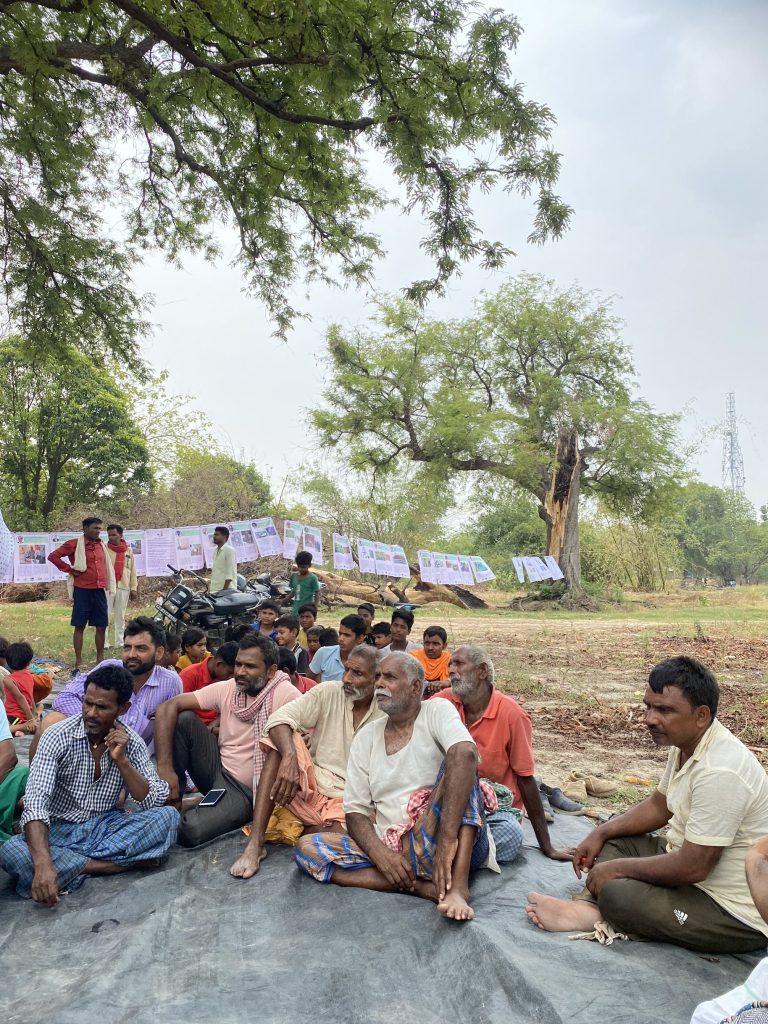Shodhyatra is pursued to look for creative people, institutions, and outstanding traditional knowledge holders in different parts of the country. Honey Bee Network organises these yatras twice a year with the help of SRISTI, GIAN and other volunteers. In summer, we walk through the hot places and in winter we go to cold places. A concept of voluntary suffering is intended to bring us closer to the local communities and reduce if not eliminate the distance between our and their way of living.

We have walked through every state of the country from Andaman Islands in the south to Gurej Valley in the north and the Himalayan villages of the northeast to the deserts of Rajasthan in the West.
The Yatris (walkers) also look for the oddball i.e. anybody doing something different and in a socially more effective manner. The Yatris try to understand the logic behind it. During the ShodhYatra, we also discover new methods of crop production, cattle rearing and improved implements/devices developed by the villagers; school teachers developing new ways of teaching many first-generation learners; communities conserving common property resource institutions; women developing new ways of formulating foods or other products out of edible weeds or uncultivated plants if possible etc.
Walkers/yatris also organize biodiversity contests, recipe competitions and exhibitions of posters of grassroots innovations often hung on ropes tied to trees or such supports. Some of the walks pass through urban areas too and observe informal sector experiments and innovations there.
Local outstanding achievers and innovators are honoured at their doorstep. Yatris seek blessings of centenarians and try to learn lessons of their healthy life. Idea competition among children often stimulates everybody’s imagination and when small kids can suggest solutions of the problems, we the elders learn to live with, the societal inertia starts melting.
some general outcomes:
A) Learning from four teachers takes place, the teacher within, among peers, in nature and among local communities. Who learns what from which teacher, of course, varies quite a lot among the group.
B) Shodhyatris also share the Honey Bee Network database of grassroots innovations, TK practices of sustainable natural resource management, educational content for school children, and some specially prepared booklets from HBN database addressing the problems identified during the reconnaissance visit.
C) All the photos taken during the yatra are shared back with the local communities along with a report of what Yatris learned during the Yatra.
D) Some of the innovators are honoured at other occasions, their profile is published in HBN newsletter and local language versions, and they are recommended for national awards also in deserving cases.
E) Some of the innovations are supported under the Micro Venture Innovation Fund to explore their scaling-up potential
F) At the annual Sattvik Traditional Food and Nutrition Festival organised By HBN and SRISTI supported by GIAN and other agencies, special stalls are given to the communities including women’s groups to sell their products.
G) A third Shodhyatra is organized for the students of IIMA as an elective course in the Himalayas in autumn. HBN volunteers help in organising these yatras too.

Fiftieth shodhyatra in scheduled in 2024 January second fortnight at Kiphire nagaland, want to join us? Write back
